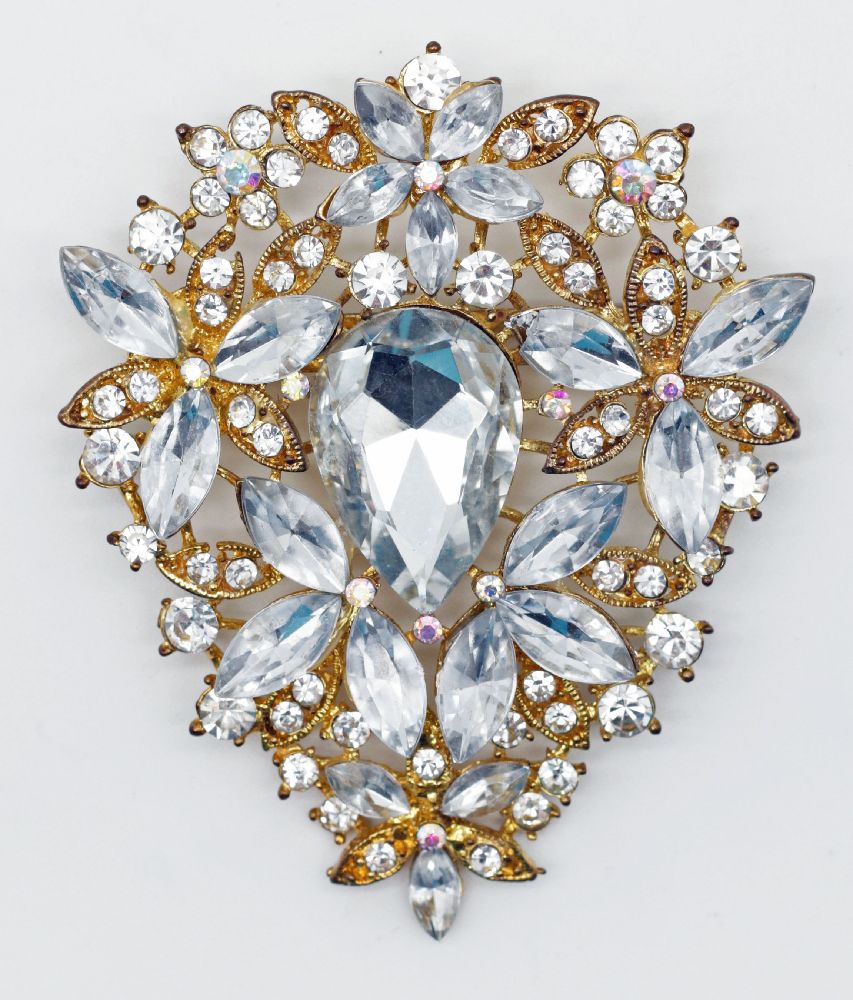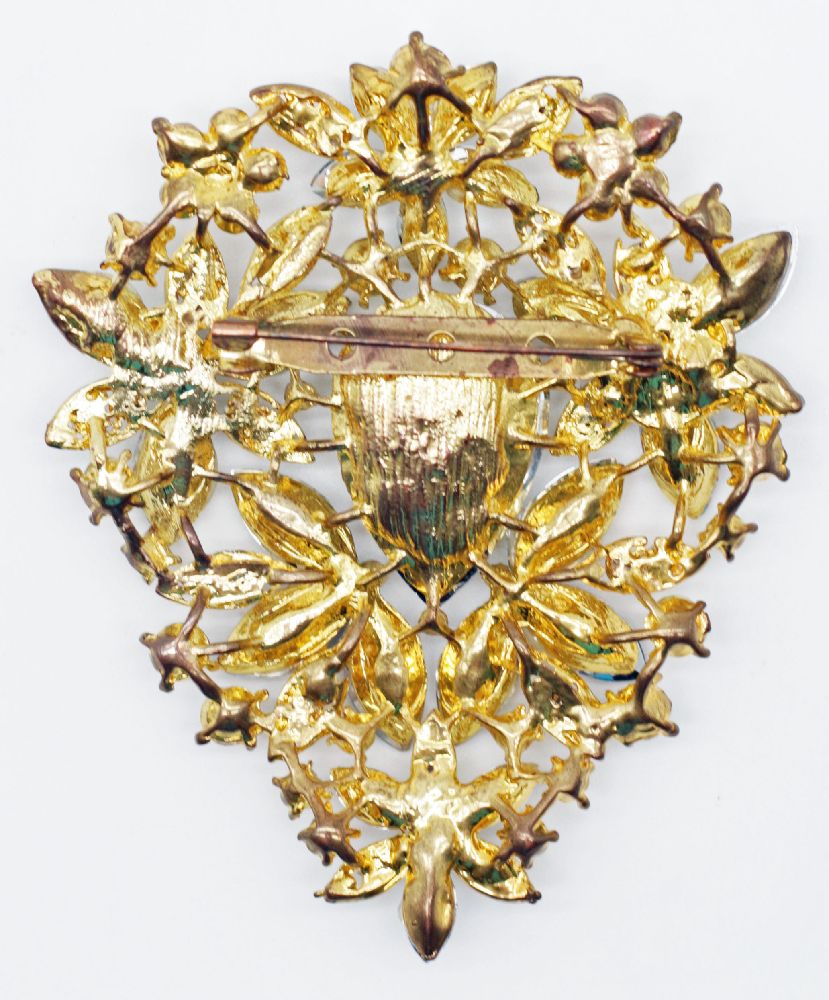The main purpose of this short essay is to show you one construction characteristic of newer jewelry in order to help you distinguish between new and old costume jewelry. Along this way I will make cutting remarks about dealers spreading falsehoods about such jewelry.
To illustrate my point, I am using a rhinestone brooch whose stones are mounted in gold settings. The very large piece measures about 3 ¼ inch in length. It is a lively attractive brooch and could be mistaken as vintage if your knowledge about jewelry construction is lacking.
One dealer offered this brooch as vintage, a term which is typically assigned to pieces made before 1980 but less than 100 years old, at which point it is antique. However, the further we slide into the 21st century, 1980 might be too restrictive.
Another dealer readily admitted that her version of this brooch was brand new, an honesty we appreciated. So what is the telltale sign that it is new? Although the front is too clean and shiny, almost antiseptic, the back confirms that it is new or newer.
First, notice the indistinct back with the spidery legs connecting the settings together. Secondly, notice the ribs on the center stone back. Finally, the modified c-clasp is not what you would expect to see on vintage jewelry.
One of these days, this brooch may become a desirable collectible piece, but as it stands, it holds modest interest to serious vintage jewelry collectors.
So why did the first dealer call this jewelry item vintage? Greed? Ignorance? At the end of the day, it doesn’t matter. The moral of the story is to arm yourself with knowledge and buy with discernment.



